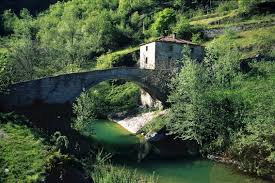A tool that is sometimes used in territorial promotion is the virtual eco-museum. The reasons that support this choice are various, let's see some.
The eco-museum creates opportunities for communities to meet and facilitate the construction of relationships between the stakeholders. The network of relationships born during the creation of the eco-museum, as the contents are determined by the collaboration of the local community with the stakeholders, then the network continues over time for eco-museum implementation. The design of a virtual eco-museum does not end with its creation, in fact it must be manned and kept active.
The virtual eco-museum is also a tool that allow to fix the memory of intangible assets, including “traditional know-how”, past and present history. To give value to the immateriality of culture, narrative ability is important, hence the growing importance of “storytelling”.
The virtual eco-museum leads to the visitor’s dialog with local communities, suggesting experiences of visiting places where they can find opportunities of interaction with the people who live there.
A virtual eco-museum suggests various interpretations of the territory and propose different ways of enjoying, so that the visitor can establish the connection he prefers. The methods of use are however based on slow and responsible tourism.
MADE IN-LAND project foresees the realization of two eco-museum among the pilot actions. The eco-museum will be expression of aggregative models, immateriality promotion and meeting occasion…it will be a bridge between the territory and the visitor.
Breadcrumb
- Home (ITA-CRO)
- Projects (ITA-CRO)
- MADEINLAND
- News
- MADE IN-LAND project: Virtual eco-museum and its role for promotion of inland areas
Asset Publisher
Cultural heritage, natural assets, local community, tourism, hinterlands, sustainable development, eco-museum, intangible assets, traditional know-how, slow tourism, responsible tourism, traditional know-how

